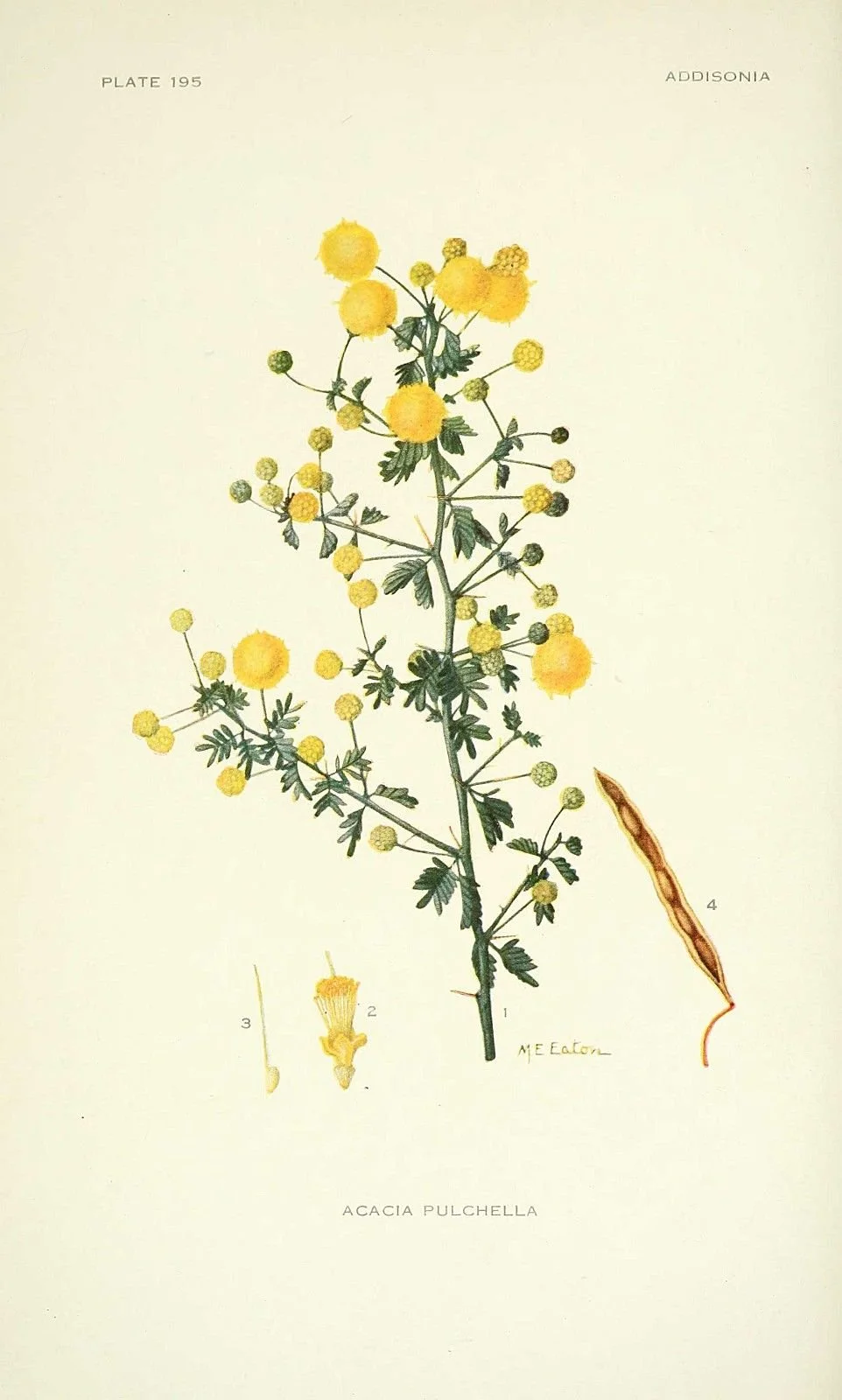Episode 10: Weird Wood & The Thiccckest Flowers: Mimosa Flowers
Hello there, and if you’re listening to this the day it comes out- Happy international women’s day! To celebrate- we’ll be talking about the official flower of international women’s day- the mimosa flower!
This little guy looks like something STRAIGHT outta dr seuss- it is whimsical, colorful, and delightfully fluffy. Mimosa flowers grow on evergreen shrubs, which are also known as Acacia dealbata,or silver wattle. They are part of the legume family with famous relatives like beans, peas, and The sensitive plant. This whole family naturally adds nitrogen back into the soil, and often provides great sources of food, so it’s a very popular and widely depended on family that I KNOW we will be talking a lot more about!
The mimosa flower itself is an evergreen, and has brilliant yellow flowers that look like tiny little pom poms. It likes plenty of bright light, rich well-draining soil, and is sensitive to cold- which makes sense, since these adorable shrubs are native to Southwestern Australia, but have been widely introduced in the mediterranean, southern africa, China, and other warm and temperate climates .
People often get these guys mixed up with mimosa trees, and while their leaves are similar, they are NOT the same plant! The mimosa tree has those big, fluffy pink flowers, whereas these guys are a lot shorter, and have lots of tiny yellow flowers.
As I mentioned earlier, this flower is famously given to women for international women’s day- especially in italy and other areas of the mediterranean. But why this flower specifically?Well, for starters, this flower is typically in bloom right now, so they tend to be top of mind, and are a welcome sight as the seasons change. These blooms are super fragrant as well, so they are an extremely popular cut flower for that reason!
On top of them being beautiful and available, these are a top choice for international women’s day because of what they symbolize- respect, elegance, dignity, and kindness. And because they are a symbol of strength- managing to bloom even in extremely harsh and dry climates. But they aren’t JUST used as a gift- they have lots of cosmetic, culinary and land-management uses as well!
First- lets dig into how we use them in cosmetics. These guys are said to be VERY fragrant, with bright, floral, and sweet notes that can also lend to a woodsy or musty scent depending on what it;s paired with, so it's no surprise we use them most commonly in perfumes. You can get a good whiff of them in scents like “Queens and monsters” by Henry Rose, Archipelago Botanicals’ Botanico de Havana, and no.23 Moonflower by beacon mercantile.
Another way these flowers are commonly used? To make gum! I also thought that sounded a little wild, but as I was digging into it, here’s what I found:
To harvest this gum, incisions are made into the tree- either on branches or the trunk, but usually the trunk. Then, as the tree is trying to heal that wound, it sends in some sap, which is then collected and THAT is what makes the gum. It is dried, then ground into a fine powder, were it can be used in food, cosmetics, and even print materials!The gum is also sometimes Called “Gum Arabic”, which kind of refers to any gum made from the acacia species.
In cosmetics it is usually used to thicken things like concealer, foundation, and other facial products like lotion, eye cream, and anything else you would want to have a creamy, smooth, and velvety consistency.
In food products, it’s used in a similar way- adding thickness to different jellies, jams, and anything else you might think to put cornstarch in- though its not super common outside of processed food production, as it isnt as cost effective or easy for small-scale producers to find.
In print materials, gum arabic is used to blend some pigments and inks, as it adds viscosity and makes it easier to work with, but just like with food- there are other more cost effective options that get used first.
But Mimosa Flower isnt JUST handy for it’s ability to produce gum- it is also used to produce luxury furniture due to its unique hardwood! It’s got very unique striations described as a “Tiger Eye” pattern, so it’s definitely a show stopper!
As if chairs and cosmetics weren’t enough- mimosa flower also helps with land restoration. See, as a member of the legume family, mimosa flower helps to add nitrogen back into the soil. And because this plant can grow in such a wide variety of climates, it tends to be one of the first to come back after a fire- helping to not only add nutrient back into the soil to help other plants, but also to help prevent erosion and add some life back to the land while the ecosystem works on recovering.
While there isnt a ton of folklore surrounding this plant, I thought it was still worth highlighting, since it is such a powerful symbol for women, and such a force for good. Thanks for listening, and be on the lookout for our bonus episode with Sophie Katz of “I Love This Thing So Fricking Much” coming this weekend!
We have a lot of really exciting partnerships and launches coming up, so be sure to keep following along. And as always- thank you so much for listening and supporting this show! Without all of you, I wouldnt have any of these opportunities! I am so stoked to start creating more content for you, and to keep growing and improving with your support!
Sources:
https://www.lifesavvy.com/19944/the-tradition-of-giving-mimosa-flowers-on-womens-day/
https://thursd.com/articles/what-is-a-mimosa-flower
https://en.wikipedia.org/wiki/Acacia_dealbata
https://medium.com/technical-excellence/the-meaning-and-story-of-the-mimosa-flower-17920684295f
https://natgeos.com/mimosa-flower-meaning/
http://www.naturalmedicinalherbs.net/herbs/a/acacia-dealbata=mimosa.php
https://www.sciencedirect.com/science/article/abs/pii/S0008621500850260
https://www.freshlycosmetics.com/en/glossary-of-ingredients/acacia-senegal-gum
https://en.wikipedia.org/wiki/Gum_arabic

